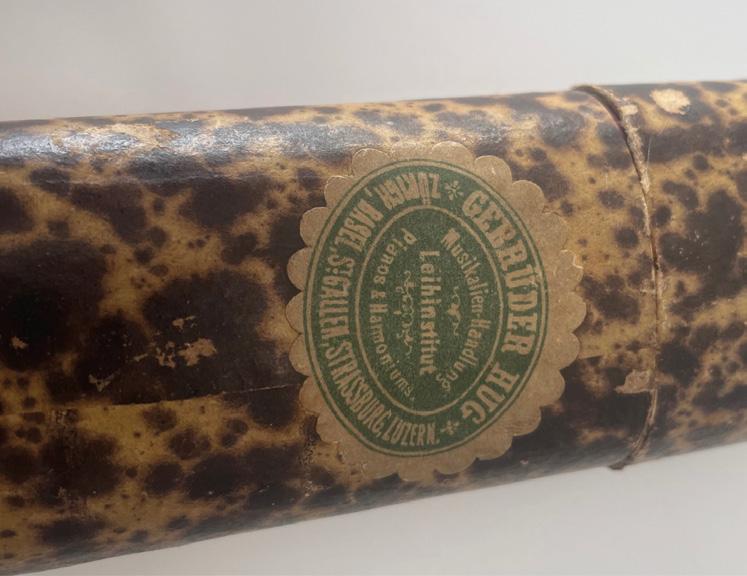
2 minute read
Chromatic Harmonica, a Short History
The Johan Richter harmonica is one of the oldest and most valuable harmonicas in my chromatic harmonica collection. In actuality, it is not per se a chromatic harmonica, as I will explain below. The first time I saw a similar instrument was a couple years ago on a German television show, where somebody presented a complete set of two singles and a double Richter harmonica. Immediately, I was fascinated. I can narrow down the date of my Richter harmonica to around CHROMATIC 1875, based on the ribbon that is attached to the top of the accompanying case. It says: Gebrüder Hug (Hug brothers). Hug was/is the HARMONICA biggest music store in Switzerland until today. The ribbon lists all store locations at that time. The latest store branch to open was in A short history Lucerne (Luzern) in 1874-75. Mark Weber This double harmonica comes with a pair of top and bottom covers, which can either block the top or the button reeds, depending on pushing one of the lower covers towards the reed plate. This interaction automatically lifts the top cover up and blocks the lower one. By releasing the lower covers, the opposite occurs. In theory, it would have been possible to use that exact mechanism to play chromatically, similar to today’s chromatic harmonicas. But instead of pushing a slide button, one could just push or release one of the lower covers. Besides, I was assuming that Johan Richter (most likely born in Bor, now in the Czech Republic) knew about the Joseph Richter Tuning. Based on his name, it is likely that he is a relative or even Joseph Richter’s son. Unfortunately, I was not able to verify that assumption. After some examination of all reeds and tuning, I got somewhat confused. The tuning is definitely not even remotely chromatic and not very coherent. It is possible some of the reeds are out of tune, but I think I could, in most cases, detect that. I was able to gather more information from the harmonica museum in Trossingen, Germany. The museum has a similar instrument displayed. There, it is described as a double-tremoloharmonica tuned in A flat, F, D flat, and G flat (as written on the accompanying case).
Mark Weber lives in Switzerland and has been interested in the harmonica since a young age. He started playing blues harmonica at the age of 14, and after hearing the famous harmonica virtuoso Tommy Reilly on the radio, he became fascinated by the chromatic harmonica. For many years, Mark has been collecting chromatic harmonicas. Today, his collection encompasses more than 200 unique instruments. In early 2019, Mark started to write a blog about the chromatic harmonica, which depicts the history of the instrument from the 19th century to today. Mark designed a new chromatic harmonica (ML-12) with a unique magnetic lock system. You can find more info on the Johan Richter harmonica, as well as other articles about historic chromatic harmonicas on his blog at: http://chromhistory.blog
Advertisement
Picture 1: Johan Richter Double Harmonica and case Picture 2: Closeup of case label Picture 3: Reeds and reed damper (lifted up) Picture 4: Spring connected to the outside of the reed damper
1 2

3 4












